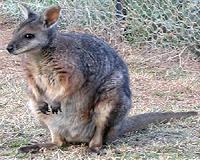| . |  |
. |
Ithaca NY (SPX) Jul 30, 2010 By deciphering the genetics in humans and fish, scientists now believe that the neck - that little body part between your head and shoulders - gave humans so much freedom of movement that it played a surprising and major role in the evolution of the human brain, according to New York University and Cornell University neuroscientists in the online journal Nature Communications (July 27, 2010.) Scientists had assumed the pectoral fins in fish and the forelimbs (arms and hands) in humans are innervated - or receive nerves - from the exact same neurons. After all, the fins on fish and the arms on humans seem to be in the same place on the body. Not so. During our early ancestors' transition from fish to land-dwellers that gave rise to upright mammals, the source for neurons that directly control the forelimbs moved from the brain into the spinal cord, as the torso moved away from the head and was given a neck. In other words human arms, like the wings of bats and birds, became separate from the head and placed on the torso below the neck. "A neck allowed for improved movement and dexterity in terrestrial and aerial environments," says Andrew Bass, Cornell professor of neurobiology and behavior, and an author on the paper. "This innovation in biomechanics evolved hand-in-hand with changes in how the nervous system controls our limbs." Bass explained that this unexpected level of evolutionary plasticity likely accounts for the incredible range of forelimb abilities - from their use in flight by birds to swimming by whales and dolphins, and playing piano for humans.
Share This Article With Planet Earth
Related Links Cornell University Darwin Today At TerraDaily.com
 A Hop From South America Tracking Australian Marsupials
A Hop From South America Tracking Australian MarsupialsMunster, Germany (SPX) Jul 30, 2010 Debates have raged for decades about how to arrange the Australian and South American branches of the marsupial family tree. While marsupials like the Australian tammar wallaby and the South American opossum seem to be quite different, research by Maria Nilsson and colleagues at the University of Munster, soon to be published in the online open access journal PLoS Biology, shows otherwise. ... read more |
|
| The content herein, unless otherwise known to be public domain, are Copyright 1995-2010 - SpaceDaily. AFP and UPI Wire Stories are copyright Agence France-Presse and United Press International. ESA Portal Reports are copyright European Space Agency. All NASA sourced material is public domain. Additional copyrights may apply in whole or part to other bona fide parties. Advertising does not imply endorsement,agreement or approval of any opinions, statements or information provided by SpaceDaily on any Web page published or hosted by SpaceDaily. Privacy Statement |